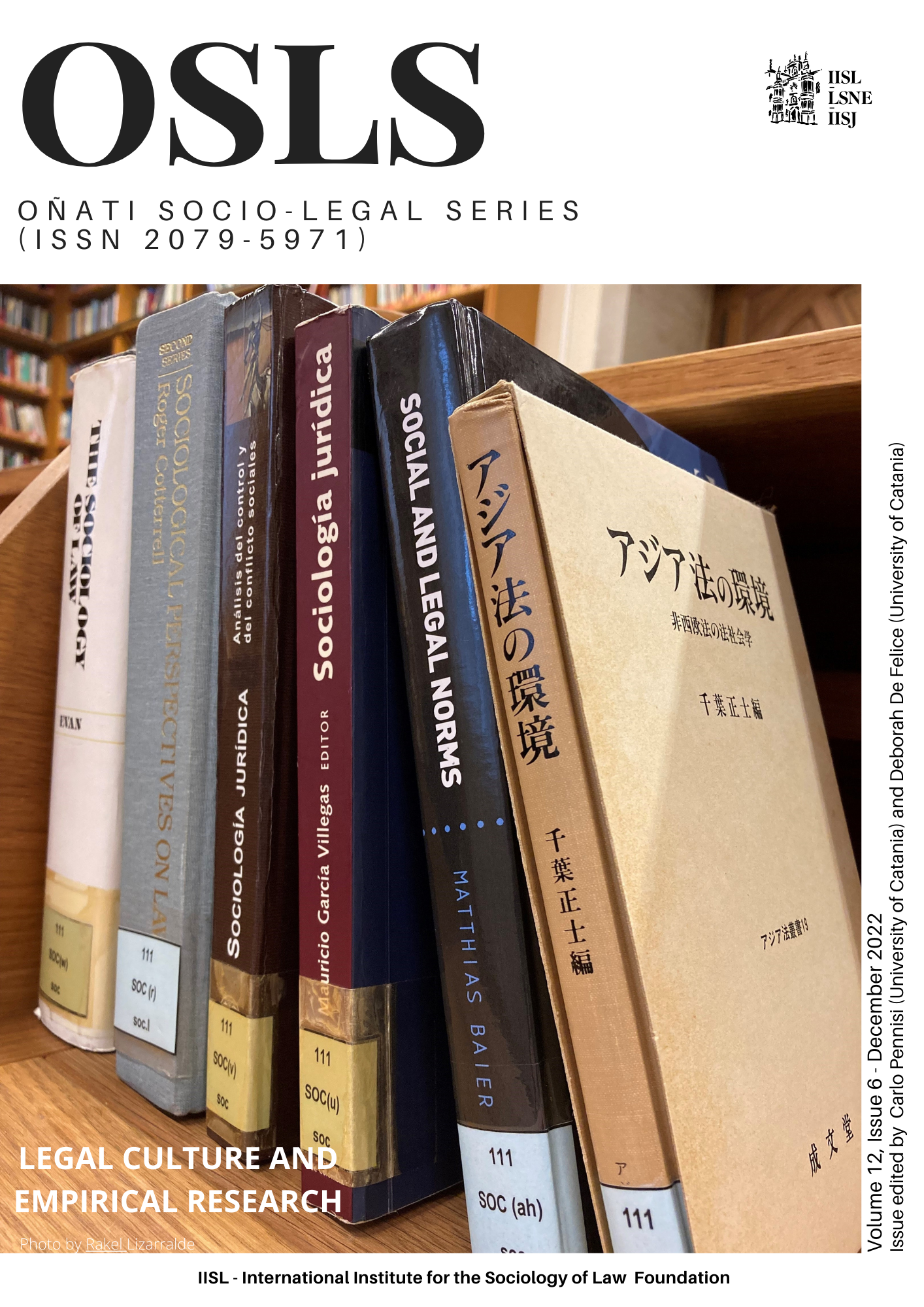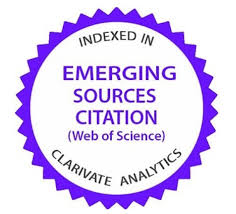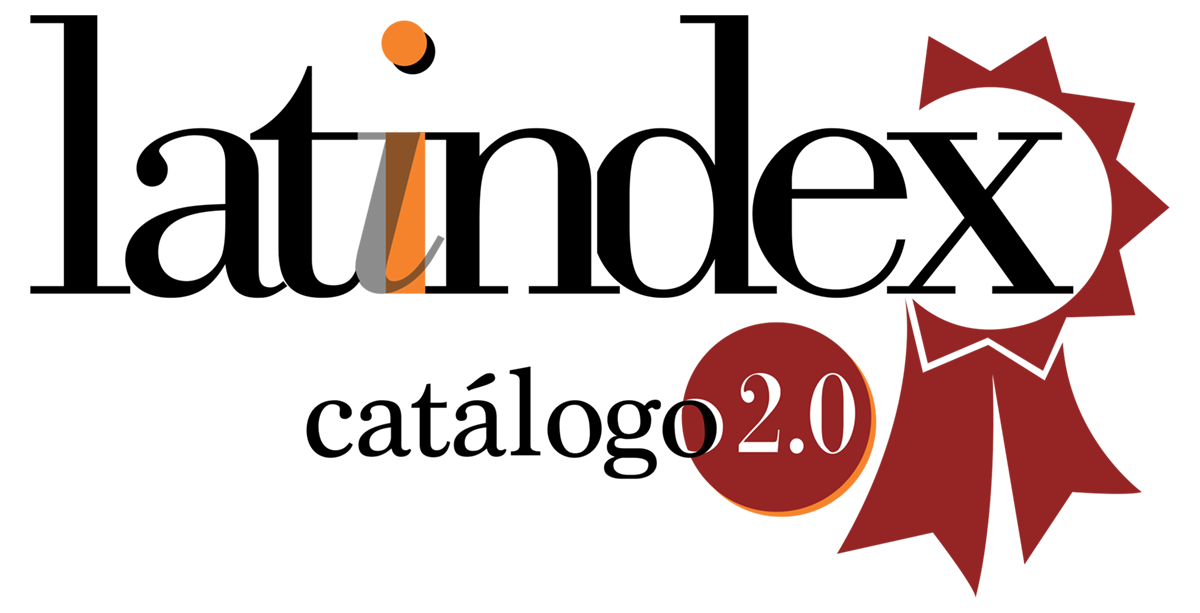Legal culture and image in the Brazilian courts
DOI:
https://doi.org/10.35295/osls.iisl/0000-0000-0000-1275Palabras clave:
Cultura Juridica, Brasil, imagen, decisión judicialResumen
Este artículo analiza la interpretación de las imágenes por parte de los tribunales brasileños y cómo la cultura jurídica es parte de este proceso. El uso de la imagen como medio de prueba difiere cualitativamente de las pruebas aplicadas tradicionalmente en el poder judicial, como documentos o testigos. La imagen se caracteriza por la instantaneidad, la emotividad y la inmediatez. Además, los medios permiten la construcción de diferentes significados, implícitos o explícitos. El análisis varía según la naturaleza de los sistemas legales. En el sistema judicial acusatorio (anglosajón) las imágenes se someten a contrainterrogatorio y se debaten oralmente. En el sistema de derecho civil, el papel del magistrado es preponderante, siendo el responsable de la validez de las imágenes. La investigación encontró que los magistrados incorporan el contenido de sus videos en sus decisiones basándose en opiniones de expertos o testimonios de testigos que han visto las imágenes. Esto pone de relieve una cultura jurídica que se basa en el formalismo y está mal preparada para afrontar las particularidades de la imagen.
Descargas
Metrics
Estadísticas globales ℹ️
|
1260
Visualizaciones
|
613
Descargas
|
|
1873
Total
|
|
Citas
Alasuutari, P., 1996. Researching Culture: Qualitative Methods and Cultural Studies. London: Sage.
Arnaud, A.J., 1998. Entre modernite et mondialisation : Cinq leçons d’histoire de la philosophie du droit et de l’État. Paris: LGDJ.
Asimow, M., 2009. Lawyers in your Living Room! Law on television. Chicago: American Bar Association.
Badaró, G.H., 2009. Tribunal do Júri: Lei 11.689, de 09.06.2008. In: Maria Thereza Rocha de Assis Moura eds., As Reformas no Processo Penal: as novas leis de 2008 e os projetos de reforma. São Paulo: RT, p. 50-245.
Barthes, R., 1964. Rhétorique de l’image. Communications [online], 4, 40–51. Available from: https://doi.org/10.3406/comm.1964.1027 [Accessed 18 February 2022]. DOI: https://doi.org/10.3406/comm.1964.1027
Blankenburg, E., 1998. Patterns of Legal Culture: The Netherlands Compared to Neighboring Germany. The American Journal of Comparative Law, 46(1),1–41. DOI: https://doi.org/10.2307/841077
Bohlander, M., 2014. Language, Culture, Legal Traditions, and International Criminal Justice. Journal of International Criminal Justice, 12(3), 491–513. DOI: https://doi.org/10.1093/jicj/mqu034
Boltanski, L., 1993. La Souffrance à Distance : Morale Humanitaire, Médias et Politique. Paris: Métailié.
Brion, D.J., 2014. The Criminal trial as a theater: the semiotic power of image. In: A. Wagner and R. Sherwin, eds., Law, Culture and Visual Studies. Dordrecht: Springer, 329–359. DOI: https://doi.org/10.1007/978-90-481-9322-6_16
Brouwer, R., 2018. On the Meaning of ‘system’ in the common and civil law traditions: two approaches to legal unity. Utrecht Journal of International and European Law [online], 34 (1), 45–55. Available from: https://doi.org/10.5334/ujiel.451 [Accessed 18 February 2022]. DOI: https://doi.org/10.5334/ujiel.451
Cappelletti, M., 2010. Processo, ideologias e sociedade (vol. II). Trans.: H. Zaneti Junior. Porto Alegre: Sergio Antonio Fabris.
Carlsson, B., and Baier, M., 2002. A Visual Self-Image of Legal Authority: The Temple of Law. Social and Legal Studies, 11(2), 185–209. DOI: https://doi.org/10.1177/096466390201100202
Carney, G., 2015. Comparative approaches to statutory interpretations in civil law and common law jurisdictions. Statute Law Review, 36(1), 46–58. DOI: https://doi.org/10.1093/slr/hmu019
Carrabine, E., 2012. Just images: aesthetics, ethics and visual criminology. The British Journal of Criminology [online], 52(3), 463–489. Available from: https://doi.org/10.1093/bjc/azr089 [Accessed 18 February 2022]. DOI: https://doi.org/10.1093/bjc/azr089
Cavallone, B., 2006. Forme del procedimento e funzione della prova (ottant’anni dopo Chiovenda). Rivista di diritto processuale, 61, 417–432.
Cavender, G., and Fishman, M., 1998. Television Reality Crime Programs: Context and History. In: M. Fishman and G. Cavender, eds., Entertaining Crime: Television Reality Programs. New York, Aldine de Gruyter, 1–18.
Cotterrell, R., 2004. Law in Culture. Ratio Juris, 17(1), 1–14. DOI: https://doi.org/10.1111/j.0952-1917.2004.00251.x
Cotterrell, R., 2017. Theory and Values in Socio-legal Studies. Journal of Law and Society [online], 44(1), 19–36. Available from: https://doi.org/10.1111/jols.12047 [Accessed 18 February 2022]. DOI: https://doi.org/10.1111/jols.12047
Cunha Filho, M.C., and Silbey, S.S., 2020. What lies behind the apparent trust in cryptocurrencies? Just Money [online], 15 April. Available from: https://justmoney.org/m-de-castro-cunha-filho-s-silbey-what-lies-behind-the-apparent-trust-in-cryptocurrencies/ [Accessed 23 July 2020].
Denti, V., 1974. La evolución del derecho de las pruebas en los procesos civiles contemporáneos. In: V. Denti, Estudios de Derecho Probatorio. Trans.: S. Sentís Melendo and T.A. Banzhaf. Buenos Aires: Jurídicas Europa-América, 79–155.
Denzin, N.K., and Lincoln, Y., 1998. Collecting and Interpreting Qualitative Materials. London: Sage.
Ewick, P., and Silbey, S., 1998. The Common Place of Law: Stories from Everyday Life. Chicago University Press. DOI: https://doi.org/10.7208/chicago/9780226212708.001.0001
Fan, M.D., 2018. Body Cameras, Big Data and Police Accountability. Law & Social Inquiry [online], 43(4), 1236–1256. Available from: https://doi.org/10.1111/lsi.12354 [Accessed 18 February 2022]. DOI: https://doi.org/10.1111/lsi.12354
Faria, J.E., 1997. Direitos humanos e globalização econômica: notas para uma discussão. Estudos avançados [online], 11(30), 43–53. Available from: https://doi.org/10.1590/S0103-40141997000200004 [Accessed 18 February 2022]. DOI: https://doi.org/10.1590/S0103-40141997000200004
Feigenson, N., 2014. The Visual in Law: some problems for legal theory. Law, Culture and the Humanities, 10(1), 13–23. DOI: https://doi.org/10.1177/1743872111421126
Feigenson, N., and Spiesel, C., 2009. Law on Display: The Digital Transformation of Legal Persuasion and Judgment. New York: NYU Press.
Fleming, D., 1996. Can pictures be arguments? Argumentation and Advocacy, 33(1), 11–22.
Flusser, V., 1985. Filosofia da caixa preta: Ensaios para uma futura filosofia da fotografia. 1st ed. São Paulo: Hucitec.
Friedman, L.M., 1975. The Legal System: A Social Science Perspective. New York: Russell Sage Foundation.
Garapon, A., 1997. Bien juger: Essai sur le rituel judiciaire. Paris: Odile Jacob.
Geertz, C., 1973. The interpretation of cultures: Selected essays. New York: Basic Books.
Giuliani, A., 1962. Problemi metodologici nello studio del diritto processuale comparato. Rivista Trimestrale di diritto processuale civile, 653–670.
Giura, G., 2015. I Delitti di Criminalità Organizata in Sicilia: Un’analisi sócio-giuridica della giurisprudenza. Milan: Mimesis.
Groarke, L., Palczewski, C.H., and Godden, D., 2016. Navigating the visual turn in argument. Argumentation and Advocacy, 52(4), 217–235. DOI: https://doi.org/10.1080/00028533.2016.11821871
Hertogh, M., and Kurkchiyan, M., 2016. When politics comes into play, law is no longer law’: Images of collective legal consciousness in the UK, Poland and Bulgaria. International Journal of Law in Context, 12(4), 404–419. DOI: https://doi.org/10.1017/S1744552316000185
Kaser, M., 1968. Derecho romano privado. Trans.: J. Santa Cruz Teijeiro. 5th ed. Madrid: Instituto Editorial Reus.
Kjeldsen, J., 2015. The study of visual and multimodal argumentation. Argumentation [online], 29, 115–132. Available from: https://doi.org/10.1007/s10503-015-9348-4 [Accessed 18 February 2022]. DOI: https://doi.org/10.1007/s10503-015-9348-4
Kjeldsen, J., 2016. Studying rhetorical audiences: a call for qualitative reception studies in argumentation and rhetoric. Informal Logic [online], 36(2), 136–158. Available from: https://doi.org/10.22329/il.v36i2.4672 [Accessed 18 February 2022]. DOI: https://doi.org/10.22329/il.v36i2.4672
Legrand, P., 2006. Comparative Legal Studies and the Matter of Authenticity. Journal of Comparative Law [online], 1(2), 365–460. Available from: https://www.pierre-legrand.com/ewExternalFiles/Comparing%2C%20Authentically.pdf [Accessed 18 February 2022].
Liu, S., 2015. Law’s social forms: a powerless approach to the sociology of law. Law & Social Inquiry [online], 40(1), 1–28. Available from: https://doi.org/10.1111/lsi.12105 [Accessed 18 February 2022]. DOI: https://doi.org/10.1111/lsi.12105
Lombardo, L., 1999. La prova giudiziale: Contributo alla teoria del giudizio di fatto nel processo. Milan: Giuffrè.
Nardelli, M.M., 2019. A prova no tribunal do júri: uma abordagem racionalista. Rio de Janeiro: Lumen Juris.
Nelken, D., 2001. Towards a Sociology of Legal Adaptation. In: D. Nelken and J. Feest, eds., Adapting Legal Cultures. Oxford: Hart, 7–54.
Nelken, D., 2012. Using Legal Culture: purposes and problems. In: D. Nelken, ed., Using Legal Culture. London: Wildy, Simmons & Hill, 1–51. DOI: https://doi.org/10.4337/9781781006108.00044
Nelken, D., 2016. Comparative Legal Research and Legal Culture: facts, approaches and values. The Annual Review of Law and Social Science, 12, 45–62. DOI: https://doi.org/10.1146/annurev-lawsocsci-110615-084950
Nobili, M., 1974. Il principio del libero convincimento del giudice. Milan: Giuffrè.
Nunes, D.J.C., 2008. Processo Jurisdicional Democrático: uma análise das reformas processuais. Curitiba: Juruá.
Penisi, C., 2006. La trasparenza della cultura giuridica. Sociologia e ricerca sociale, 79, 45–54.
Perrocheau, V., and Zerouki Cottin, D., 2018. La visioconférence dans le procès pénal français, d’un rituel a l’autre? Oñati Socio-Legal Series [online], 8(3), 346–362. Available from: https://doi.org/10.35295/osls.iisl/0000-0000-0000-0943 [Accessed 18 February 2022]. DOI: https://doi.org/10.35295/osls.iisl/0000-0000-0000-0943
Rafter, N., and Brown, M., 2011. Criminology Goes to the Movies. Albany: New York University Press.
Rebuffa, G., and Blankenburg, E., 1993. Culture juridique. In: A.J. Arnaud ed., Dictionnaire encyclopédique de théorie et de sociologie du droit. Paris: LGDJ, 139–141.
Riccio, V., et al., 2018. Imagem e Retórica na prova em vídeo. Revista de Informação Legislativa, RIL [online], 55(220), 85–103. Available from: https://www12.senado.leg.br/ril/edicoes/55/220/ril_v55_n220_p85 [Accessed 18 February 2022].
Roque, G. 2016. Esquisse d’une rhétorique des interactions verbo-iconiques. Images Revues [online], 5, 1–19. Available from: https://doi.org/10.4000/ DOI: https://doi.org/10.4000/imagesrevues.3434
imagesrevues.3434 [Accessed 19 December 2017].
Sarat, A., and Kearns, T., 1998. The Cultural Lives of Law. In: A. Sarat and T. Kearns, eds., Law in the Domains of Culture. Ann Arbor: University of Michigan Press, 1–20. DOI: https://doi.org/10.3998/mpub.15805
Shearing, C., and Ericson, R.V., 1991. Culture as Figurative Action. British Journal of Sociology, 42(4), 481–506. DOI: https://doi.org/10.2307/591444
Sherwin, R., 2011. Visualizing Law in the Age of the Digital Baroque: Arabesques and Entanglements. New York: Routledge. DOI: https://doi.org/10.4324/9780203815861
Silbey, J., 2008. Cross-Examining Film. Law Journal of Race, Religion, Gender and Class [online], 8(1), 17–46. Available from: https://digitalcommons.law.umaryland.
edu/rrgc/vol8/iss1/4/ [Accessed 18 February 2022].
Silbey, J., 2017. Cross-Examining Film: American trial films and the popular culture of law. In: N. Rafter and M. Brown, eds., The Oxford Encyclopedia of Crime, Media and Popular Culture, 1–25. DOI: https://doi.org/10.1093/acrefore/9780190264079.013.200
Silbey, S., 2010. Legal Culture and the cultures of legality. In: J.R. Hall, L. Grindstaff and M.C. Leo, eds., Handbook of Cultural Sociology. London/New York: Routledge, 470–479.
Swidler, A., 1986. Culture in Action: symbols and strategies. American Sociological Review, 51(2), 273–286. DOI: https://doi.org/10.2307/2095521
Thompson, J.B., 1995. The Media and Modernity: A Social Theory of the Media. Redwood City: Stanford University Press.
Tozzi, A., 1974. L’evoluzione del giudizio di fatto nel processo romano. Rivista di diritto processuale civile, 17, parte I, anno 1940, 125–229.
Varano, V., and Barsotti, V., 2014. La tradizione giuridica occidentale: testo e materiali per un confronto civil law commmon law. 5th ed. Turin: Giappichelli.
Wagner, A., and Bozzo-Rey, M., 2014. French Commemorative postage stamps as the means of legal culture and memory. In: A. Wagner and R.K. Sherwin, eds., Law, Culture and Visual Studies. Dordrecht: Springer, 307–328. DOI: https://doi.org/10.1007/978-90-481-9322-6_15
Publicado
Cómo citar
Número
Sección
Licencia
Derechos de autor 2022 Vicente Riccio, Clarissa Diniz Guedes

Esta obra está bajo una licencia internacional Creative Commons Atribución-NoComercial-SinDerivadas 4.0.
Los autores conservan el copyright de sus trabajos, que se publicarán en OSLS bajo una licencia Creative Commons Reconocimiento NoComercial SinObraDerivada. Puede consultar más detalles en: http://es.creativecommons.org/licencia/. Si no está de acuerdo con esta licencia, por favor, póngase en contacto con nosotros.
El autor concede los permisos necesarios para difundir la información bibliográfica del artículo, incluyendo el resumen, y autorizar a otros, incluyendo las bases de datos bibliográficas, de índices y servicios de alerta de contenidos, a copiar y comunicar esta información.
Para más información sobre los permisos para distribuir su artículo en cada fase de la producción, por favor, lea nuestra Política de Autoarchivo y Divulgación (en inglés).
Las condiciones de copyright con el nombre de autores y co-autores, y la licencia Creative Commons se mostrarán en el artículo. Estas condiciones se deben aceptar como parte del proceso de envío de un artículo a la revista. Por favor, asegúrese de que todos los co-autores se mencionan correctamente, y que entienden y aceptan estos términos.






















